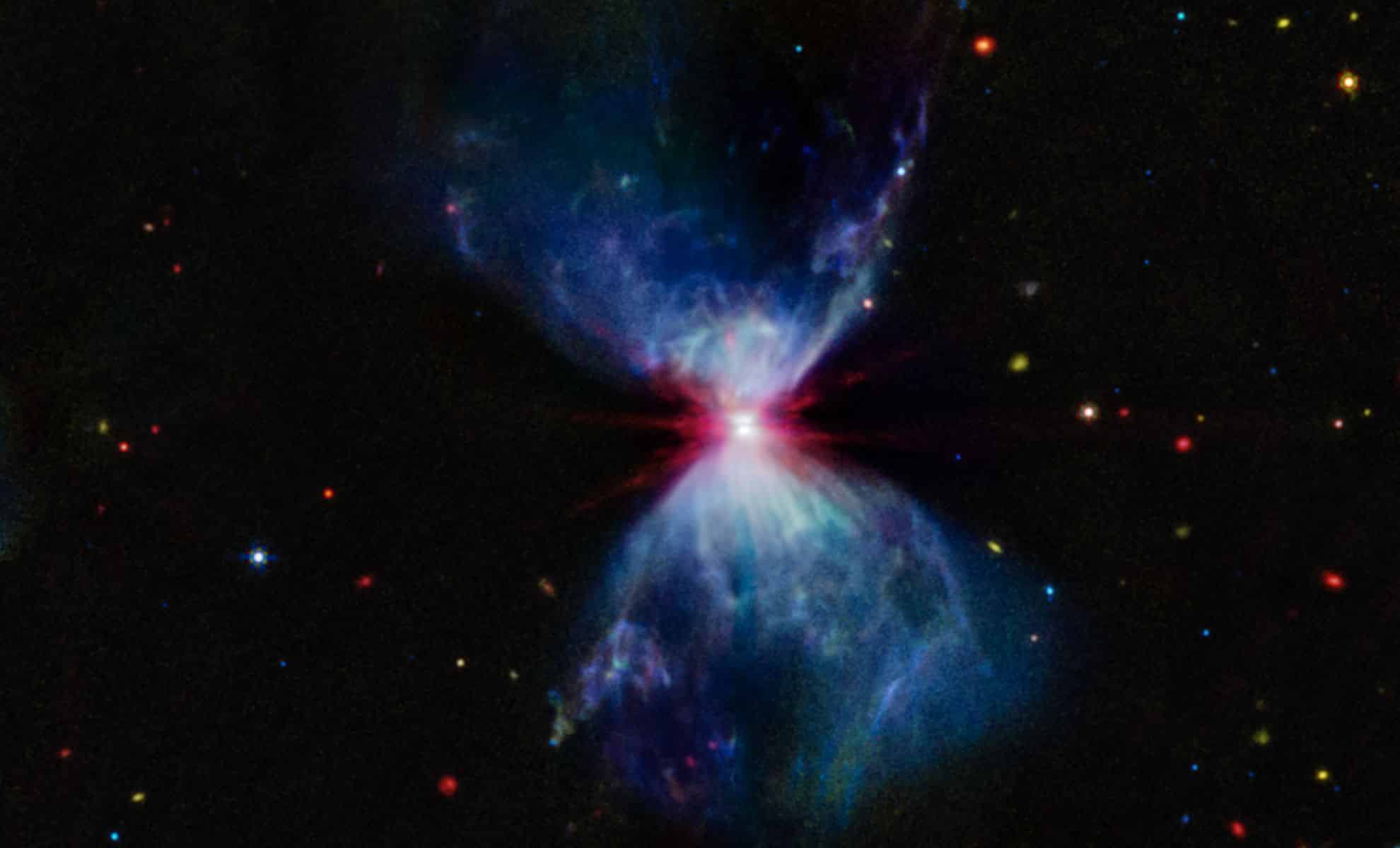The James Webb Space Telescope (JWST) has provided a breathtaking glimpse into the early stages of star formation, capturing the dramatic development of a protostar in a luminous hourglass-shaped cloud.
This observation, which illuminates the complex processes involved in star birth, provides profound insights into the behavior and evolution of young stellar objects.
Observation of the protostar L1527
The centerpiece of this remarkable observation is protostar L1527nestled in the dark molecular cloud known as L1527. Using the JWST’s Mid-Infrared Instrument (MIRI), scientists have captured a vivid image of the protostar as it undergoes significant changes.
This protostar, about 100,000 years old, is in the early stages of star formation and is actively accreting material from the surrounding protoplanetary disk. The striking hourglass shape captured in the image is the result of powerful outflows emitted by the protostar interacting with the surrounding molecular cloud.
Details revealed by mid-infrared imaging
The MIRI image provides a detailed look at the protostar and its surroundings, revealing several critical features. At the core of the hourglass, the protostar is surrounded by a dense protoplanetary disk that is seen edge-on as a dark line.
As the protostar accretes material from this disk, it emits outflows that collide with the surrounding molecular cloud, creating bow shocks. These interactions produce filamentary structures that illuminate the hourglass shape, providing a dynamic snapshot of star formation in action.
The role of gas and dust
MIRI mid-infrared images provide unique insights into the composition of the protostar’s environment. The image distinguishes between different materials, with blue regions indicating the presence of polycyclic aromatic hydrocarbons and red regions representing the dense dust and gas surrounding the protostar.
This distinction allows scientists to better understand how the protostar’s outflows influence and reshape the surrounding molecular cloud, shedding light on the complex interactions that occur during the early stages of star formation.
The future of the protostar
As the protostar evolves, it will consume and disperse much of the surrounding material. The energetic jets and outflows will eventually clear away the molecular cloud, making the star more visible in the future.
This process, observed in detail by the JWST, sheds light on the early stages of star formation and the dynamic interactions between young stars and their birth environment.
Implications for star formation
The detailed observations of L1527 provide important insights into the mechanisms of star formation. The interaction between the outflows of the protostar and the molecular cloud not only shapes the immediate environment, but also influences the formation of other stars in the region. This dual role can either hinder or catalyze the birth of new stars, depending on the specific circumstances.
Impact on the surrounding region
As the protostar matures, its continued interaction with the molecular cloud will have broader implications for the surrounding region. L1527’s outflows and energetic jets could influence the formation of other nearby stars, either by compressing the surrounding material to trigger new star formation or by scattering the gas and dust, preventing additional stars from forming. These observations provide a glimpse into the dynamical processes that govern star formation and the evolution of stellar nurseries.
The Role of the James Webb Space Telescope
The James Webb Space Telescope, a partnership between NASA, the European Space Agency (ESA) and the Canadian Space Agency (CSA), continues to push the boundaries of our understanding of the universe. By observing celestial phenomena such as the formation of the protostar L1527, JWST provides invaluable data that help unravel the complexities of cosmic evolution.
Future studies and discoveries
The findings from this observation not only advance our understanding of star formation, but also pave the way for future studies that will further elucidate the processes that govern the birth and development of stars in our galaxy and beyond. As the JWST continues its mission, it promises to reveal more secrets of the universe, adding to our understanding of the fundamental processes that shape the cosmos.

